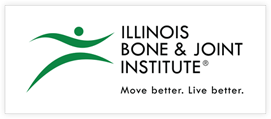Glenohumeral Instability with Bone Loss
The shoulder (the glenohumeral joint) is a ball and socket joint. The ball is the head of the upper arm bone, called the humerus. It sits in the glenoid fossa on the shoulder blade. The socket is surrounded by the labrum, that deepens the socket, provides joint stability, holds the upper arm bone in place, and seals the joint.
Shoulder instability results when the humeral head is forced out of its socket, due to a traumatic shoulder dislocation, or partial dislocation (subluxation). Dislocation can result from a sports injury, a fall, or an accident. A shoulder dislocation can damage the soft tissues, stretching or tearing the ligaments and damaging the labrum (Bankart lesion). A majority of dislocations (98%) are anterior dislocations; this means that the humeral head comes out in front of glenoid. However, often in addition to soft tissue damage, fractures of humeral head or the socket (glenoid) can occur.
Once a dislocation has occurred, the shoulder is a susceptible to repeated dislocations without surgery. Unfortunately, the younger the patient at the time of dislocation, the higher the likelihood of repeated dislocations. In fact, 95% of patients under the age of 23 will end up needing surgery to prevent repeated dislocations. Bony defects are a common finding in recurrent dislocations and failures after arthroscopic repair of the soft tissue like a labral tear. Thus, soft tissues repair alone will not be adequate to restore stability to the shoulder. The bony defects must also be treated to restore stability. Glenohumeral instability with bone loss can be a painful and debilitating condition that worsens with every repeated dislocation.
- pain
- clicking or popping sounds with shoulder movement
- arm weakness
- numbness and tingling in the arm or hand
- feeling the shoulder is ready to give way
Glenoid defects are fractures of the socket or bony Bankart lesions. Humeral bone defects on the head of the upper arm bone (the humerus) are called Hill Sachs lesions.
Glenoid bony defects are found in 22% of primary anterior shoulder dislocations and nearly 90% of recurrent cases. While small defects have a limited impact on stability, the risk of instability increases with the size of the defect. When a small piece of the glenoid bone is torn along with a labrum tear these lesions are called “bony Bankart lesions”. They increase the risk of instability. The larger the defect the greater the risk of recurrent dislocations.
Defects of the head of the upper arm bone, called Hill-Sachs lesions, are common in shoulder dislocations found in up to 93% of shoulder dislocations. A combination of these lesions and glenoid lesions lead to an increased risk of dislocation and add complexity to treatment options.
Bony defects are a recognized risk factor for surgical failure after soft tissue stabilization surgery and require bony augmentations. Proper preoperative evaluation of injuries to glenoid and the head of the upper arm bone is a critical step in treating patients with shoulder instability and tailoring optimal surgical procedures.
Dr. Patel will ask about your symptoms and medical history. He will examine your shoulder and order imaging studies including x-rays to evaluate the bones and look for bone loss, and an MRI and/or CT scan to reveal soft tissue damage to ligaments and muscles. Diagnostic arthroscopy may be recommended to identify both glenoid and humerus bony defects.
In addition to surgical treatment of soft tissue tears, bony defects must be treated. Treatment of Hill-Sachs lesions depends on the size and location of the lesion, and whether a bony Bankart lesion of the glenoid is also involved. A small Hill-Sachs lesion may be treated without surgery. However, most of these defects require surgery to restore shoulder stability. Surgery may be arthroscopic or open depending on the treatment.
The Latarjet procedure is used to treat recurrent shoulder dislocations caused by bone loss on the glenoid socket. It involves a bone graft from the coracoid. Options to treat Hill-Sachs lesions include resurfacing the humeral head with a metal implant or an allograft vs remplissage which covers the defect and prevents it from engaging with the socket.
Each procedure has its own set of complications but has demonstrated reduced rates of recurrent instability. Dr. Patel will decide on the best treatment options for each individual patient. Recovery depends on the type and extent of your injuries and surgical procedures. Dr. Patel and his colleagues at the Cleveland Clinic are leaders in the management of complex shoulder instability. The research performed by Dr. Patel has allowed surgeons throughout the world better manage these tough problems. You can review this research under the publications tab of Dr. Patel’s website.
Dr. Ronak M. Patel is a double board-certified orthopaedic surgeon and sports medicine physician. He completed his bachelor’s degree, medical degree, and residency training at Northwestern University. He, then completed his fellowship training at the Cleveland Clinic. He specializes in the treatment of complex knee, shoulder and elbow injuries and degenerative conditions. Contact him to schedule a consultation to learn more about how he can help you return to the life you love and the activities that make life worth living. He serves teens and adults in Chicagoland and NW Indiana.
At a Glance
Ronak M. Patel M.D.
- Double Board-Certified, Fellowship-Trained Orthopaedic Surgeon
- Past Team Physician to the Cavaliers (NBA), Browns (NFL) and Guardians (MLB)
- Published over 49 publications and 10 book chapters
- Learn more

